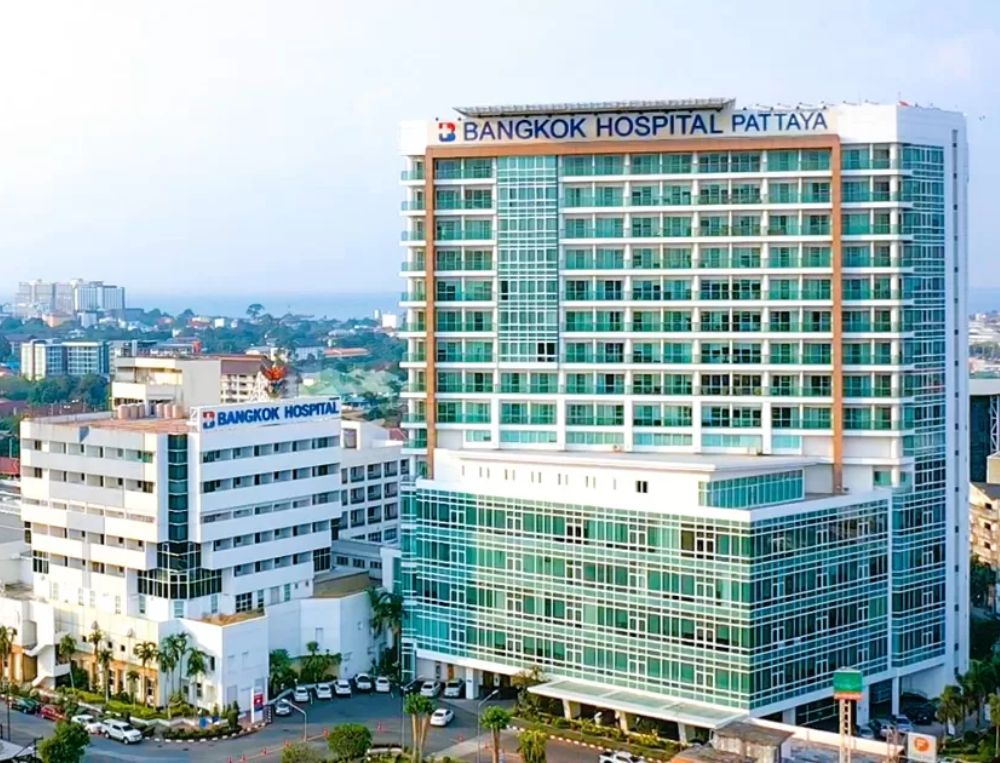Best Clinics for Intraocular Lens Installation in Thailand
Thailand is more than just a beautiful country; it's a place where you get excellent eye care. Many Thai clinics offer Intraocular Lens Installation to treat various eye diseases, including cataracts, astigmatism, or weak eyesight.
If you are eager to get rid of your eye problems, you’re at the right place. In this text, we will discuss the installation of an intraocular lens (IOL) in detail. This includes the cost, pre-operative tests, and recovery instructions.
Cost of Intraocular Lens Installation in Thailand
Here’s a cost table showing the costs of different techniques for Intraocular Lens Installation:
| Procedures | Costs |
| Standard Monofocal Lens Installation | $1,500-$2,500 |
| Premium Multifocal Lens Installation | $3,000-$4,500 |
| Toric Lens for Astigmatism Correction | $2,000-$3,500 |

We also believe in transparency. While we ensure all reviews are genuine, we cannot guarantee the accuracy of every detail. Read more about it in our Reviews Policy.
Patients Reviews Criteria




The patient review has been verified Patients Reviews Policy
 Nigeria
Nigeria
The patient review has been verified Patients Reviews Policy
 UK
UK
The patient review has been verified Patients Reviews Policy
 Russia
Russia
The patient review has been verified Patients Reviews Policy
 Thailand
Thailand
The patient review has been verified Patients Reviews Policy
 Thailand
Thailand

We also believe in transparency. While we ensure all reviews are genuine, we cannot guarantee the accuracy of every detail. Read more about it in our Reviews Policy.
Patients Reviews Criteria




The patient review has been verified Patients Reviews Policy
The patient review has been verified Patients Reviews Policy
 USA
USA
The patient review has been verified Patients Reviews Policy
 UK
UK
The patient review has been verified Patients Reviews Policy
 Australia
Australia
The patient review has been verified Patients Reviews Policy
 Hong Kong
Hong Kong
We also believe in transparency. While we ensure all reviews are genuine, we cannot guarantee the accuracy of every detail. Read more about it in our Reviews Policy.
Patients Reviews Criteria



The patient review has been verified Patients Reviews Policy
 Germany
Germany
The patient review has been verified Patients Reviews Policy
 Thailand
Thailand
The patient review has been verified Patients Reviews Policy
The patient review has been verified Patients Reviews Policy
 Mexico
Mexico
The patient review has been verified Patients Reviews Policy
 Poland
Poland


We also believe in transparency. While we ensure all reviews are genuine, we cannot guarantee the accuracy of every detail. Read more about it in our Reviews Policy.
Patients Reviews Criteria



The patient review has been verified Patients Reviews Policy
 Canada
Canada
The patient review has been verified Patients Reviews Policy
 Mexico
Mexico
The patient review has been verified Patients Reviews Policy
The patient review has been verified Patients Reviews Policy
 Mexico
Mexico
The patient review has been verified Patients Reviews Policy
 India
India


We also believe in transparency. While we ensure all reviews are genuine, we cannot guarantee the accuracy of every detail. Read more about it in our Reviews Policy.
Patients Reviews Criteria




The patient review has been verified Patients Reviews Policy
 USA
USA
The patient review has been verified Patients Reviews Policy
 Poland
Poland
The patient review has been verified Patients Reviews Policy
 Canada
Canada
The patient review has been verified Patients Reviews Policy
 Mexico
Mexico
The patient review has been verified Patients Reviews Policy
 Poland
Poland


We also believe in transparency. While we ensure all reviews are genuine, we cannot guarantee the accuracy of every detail. Read more about it in our Reviews Policy.
Patients Reviews Criteria
The patient review has been verified Patients Reviews Policy
 Thailand
Thailand
The patient review has been verified Patients Reviews Policy
 Thailand
Thailand
The patient review has been verified Patients Reviews Policy
 Singapore
Singapore

We also believe in transparency. While we ensure all reviews are genuine, we cannot guarantee the accuracy of every detail. Read more about it in our Reviews Policy.
Patients Reviews Criteria
The patient review has been verified Patients Reviews Policy
 Switzerland
Switzerland
The patient review has been verified Patients Reviews Policy
 Thailand
Thailand
The patient review has been verified Patients Reviews Policy
 Thailand
Thailand


We also believe in transparency. While we ensure all reviews are genuine, we cannot guarantee the accuracy of every detail. Read more about it in our Reviews Policy.
Patients Reviews Criteria
The patient review has been verified Patients Reviews Policy
The patient review has been verified Patients Reviews Policy
The patient review has been verified Patients Reviews Policy
 Thailand
Thailand

We also believe in transparency. While we ensure all reviews are genuine, we cannot guarantee the accuracy of every detail. Read more about it in our Reviews Policy.
Patients Reviews Criteria
The patient review has been verified Patients Reviews Policy
 USA
USA
Suitable Patients for Intraocular Lens Installation
Patients with the following eye problems can consider getting this procedure:
- Cataracts (clouding of lens)
- Astigmatism ( objects at any distance appear blurred )
- Myopia (distant objects to appear blurred)
- Hyperopia (near objects appear blurred)
What Tests Will I Have to Undergo Before Intraocular Lens Installation in Thailand?
Various pre-operative tests are performed for Intraocular Lens Installation in Thailand. This makes sure that there are no contraindications to the surgery. Some common tests are:
- Eyesight test: This test helps figure out how well you can see things up close and far away. It's done to find the right power for your glasses or lenses.
- Biometry: It checks the size and shape of your eyes to make sure the lens fits just right.
- Cataract Evaluation: This helps assess the extent of cataracts, if present.
- Corneal Health Check: This test examines the front part of your eyes to ensure the cornea is healthy and can support the lens.
- Intraocular Pressure Measurement: The test is performed to check the pressure inside your eyes. This helps rule out conditions like glaucoma before the lens installation.
What Techniques Do Doctors in Thailand Use for Intraocular Lens Installation?
Doctors in Thailand offer a wide range of techniques for patients with different requirements. These include:
Single Piece Foldable IOL Installation in the Bag:
This technique is commonly used during routine cataract surgery when the natural lens is removed and an intraocular lens (IOL) is implanted in the capsular bag.
Single-piece IOLs are simpler to implant as they unfold within the capsular bag. The advantage of Placing the IOL in the capsular bag is that it provides stability and reduces the risk of complications.
3-Piece Implantation in the Sulcus:
This technique is used when placing the entire IOL within the capsular bag is not possible or in cases where there is insufficient capsular support. Therefore, the haptics of the IOL are placed in the ciliary sulcus.
Placing an IOL in the sulcus may be preferred in complex cases, such as those with zonular weakness. The method offers stability, but it requires careful surgical skills to prevent complications.
Iris-fixated IOL (Anterior or Retropupillary)
Iris-fixated IOL installation is performed when there is no capsular support, and sulcus implantation is also not suitable. Thus, the lens is attached to the iris.
Anterior iris fixation involves fixing the lens in front of the iris, while retro pupillary fixation positions it behind the iris. Retropupillary fixation is often preferred as it reduces the risk of iris pigment dispersion.
Scleral Fixation
Scleral fixation is done when there is a lack of capsular support, and the sulcus or iris fixations aren't the best choice either. Therefore, the lens is sutured to the sclera.
This technique provides maximum stability and is suitable for a wide range of cases, including complex ones. However, it is more invasive and requires a longer recovery period.
Intraocular Lens Installation has a success rate of more than 90% (Pristyncare). The procedure is completed in approximately 30 minutes to an hour. And, the recovery takes about 2-3 weeks.


Aftercare Instructions for Intraocular Lens Installation
Patients are advised to follow the following instructions for speedy recovery after the procedure:
- Use eye drops for at least 3-4 weeks to aid healing and prevent infection.
- Wear sunglasses, especially in bright sunlight, and avoid rubbing or putting pressure on your eyes.
- Limit physical activities, especially those that can affect your eye's healing process during the first 2-3 weeks.
- Keep your surroundings dust-free to protect your healing eyes from irritants.
- Your doctor may also recommend using an eye shield, mainly while sleeping, to prevent accidental contact. Use this for at least a week.
Complications of Intraocular Lens Installation
Even though the procedures have minimal side effects, there is still a slight chance that patients may experience the following complications:
- Infection
- Temporary vision fluctuations
- Glare or halos, especially at night
- Discomfort or dry eyes
- Cataract development
Fill out the form or call us for a free consultation 
Need help choosing a clinic or doctor?
Why Should I Visit Thai Clinics for Intraocular Lens Installation?
There are many reasons why patients choose Thai hospitals for Intraocular Lens Installation:
Cutting-Edge Facilities
Thailand has modern and well-equipped clinics. These clinics offer the latest techniques for Intraocular Lens Installation, including Single Piece Foldable IOL Installation, 3-piece Implantation in the Sulcus, Iris-fixated IOL, and Scleral Fixation. Some of the best clinics for Intraocular Lens Installation in Thailand include:
- Bangkok Hospital Phuket: The hospital is accredited by several organizations such as JCI, ISO, and HA accreditation. The hospital offers advanced technology, such as The latest generation of robotic technology, 3D imaging, and much more.
- Yanhee Hospital: The hospital is accredited by JCI, United States. It offers a wide range of ophthalmology treatments such as cataract treatment, glaucoma treatment, laser eye surgery, and retinal disorders treatment.
Expert Ophthalmologists
Thai ophthalmologists are renowned for their skills and expertise in eye care. Most of them have more than five years of experience. Experienced doctors in Thailand for intraocular lens installation are:
- Dr. Phagarnart Eiumtrakulis is a highly skilled ophthalmologist specializing in cataract surgery, corneal surgery, and glaucoma surgery. He currently serves as an Assistant Professor at Chiang Mai University, Thailand.
- Dr. Manchima Makornwattana specializes in various minimally invasive procedures. In 2001, he received a diploma from the Thai Board of Ophthalmology. In 2003, he completed a fellowship in Glaucoma Research from the USA.
Cost-Effective Solutions
Thai clinics offer cost-effective treatment options without compromising on the quality of care. Costs are 30-40% lower than in countries like the USA and Canada, thus attracting patients from all over the globe.
Cultural and Recreational Opportunities
Patients can also combine their medical journey with the opportunity to explore Thailand's rich culture and enjoy recreational activities. This makes their healthcare experience worth it.























